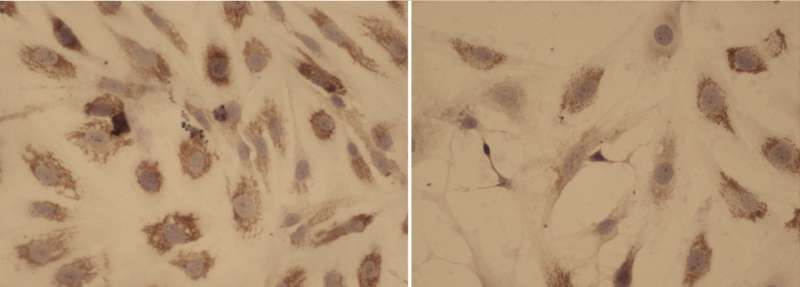Researchers find a potential new combination therapy against a rare disease

Myelofibrosis is a severe and very rare haematological disease for which treatment has only been partially effective to date. Its low incidence rate is one of the reasons why effective therapies are still lacking. The H12O-CNIO Haematological Malignancies Clinical Research Unit at the Spanish National Cancer Research Centre (CNIO) has now reported substantial improvement in the treatment of myelofibrosis using a three-drug combination therapy. A clinical trial involving patients is already up and running. Findings are published in the journal Haematologica
The research was led by Joaquín Martínez-López and coordinated by Miguel Gallardo. It is based on a pharmacological screening process in which cells taken from patients suffering from myelofibrosis are exposed to several drugs, including ruxolitinib, one of the treatments recommended for this disease. The results show that its beneficial effect is enhanced when combined with nilotinib and prednisone, which are currently used to treat other diseases.
Myelofibrosis affects bone marrow stem cells, which are responsible for making all blood cells. It is characterised by the excess production of connective tissue that leads to fibrosis, and which eventually replaces stem cells in the bone marrow. This in turn forces blood cells to mature outside of the bone marrow, and immature cells can even migrate to other tissues such as the spleen or liver. The average age of patients at diagnosis is 65, although myelofibrosis also occurs in young people. Survival with treatment is around five years.
The most important advance in myelofibrosis research happened in 2005: the discovery of the JAK2 gene mutation, which, together with the finding of the CALR mutation in 2013, explains the molecular mechanism that causes this disease in 90 percent of patients.
Thanks to that finding, clinicians began using ruxolitinib, which acts by inhibiting the activity of the JAK2 molecule. This treatment has been shown to be fairly effective in polycythemia vera and essential thrombocythemia, pathologies that involve the JAK2 mutation, but not as effective in myelofibrosis.
Gallardo says, "Ruxolitinib is one of the recommended treatments for myelofibrosis, but, although it is still too soon to evaluate its effectiveness in terms of survival, it has proved to be effective in only a proportion of patients, and even in these, only to treat certain symptoms."
So five years ago, the lead author of the paper, Alicia Arenas, began to explore the effectiveness of other drugs already in use for other ailments, alone or in combination with ruxolitinib.
The group selected 17 compounds whose mechanisms of action or therapeutic effects could provide potential treatments for myelofibrosis. The researchers conducted ex vivo tests on samples from patients with myelofibrosis and began to expose cells to the different compounds, either singly or in multiple combinations. They then measured the effectiveness of each combination and studied the biological pathways on which each compound was acting.
The results are starting to come in, and are encouraging. They reveal that in combination, nilotinib, prednisone and ruxolitinib potentiate each other, thereby enhancing the effectiveness of the therapeutic benefit of ruxolitinib.
As explained in Haematologica, the authors attribute the improvement observed to the combination of the antifibrotic effect of nilotinib with the immunomodulatory action of ruxolitinib and the anti-proliferative action of prednisone against the myelofibrosis blast cell. Prednisone is a corticosteroid; and nilotinib is used for the treatment of chronic myeloid leukaemia.
Based on the findings of the synergetic effect of the combination therapy on myelofibrosis, a phase I clinical trial has been launched in order to study whether the positive results observed in cell cultures are also seen in patients. Eight Spanish hospitals are taking part in this trial.
More information: Alicia Arenas Cortés et al, Ruxolitinib in combination with prednisone and nilotinib exhibit synergistic effects in human cells lines and primary cells from myeloproliferative neoplasms, Haematologica (2018). DOI: 10.3324/haematol.2018.201038












